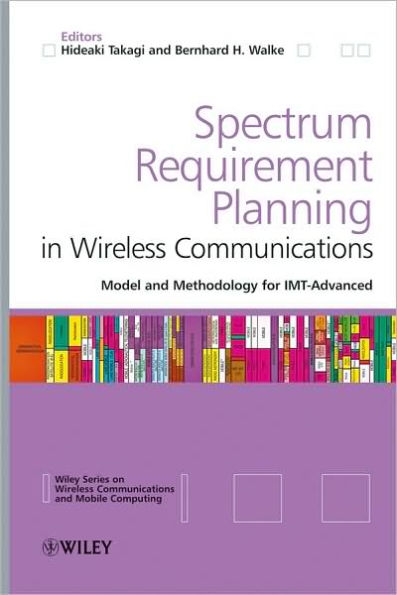Table of Contents
About the Series Editors. Preface.
1 Introduction (Bernhard H. Walke and Hitoshi Yoshino).
1.1 Trends inMobileCommunication.
1.1.1 Mobileapplicationsandservices.
1.1.2 Radio interface technologies.
1.1.3 Standardization.
1.2 Trends inSpectrumUsage.
1.2.1 Physicalpropertiesof radiospectra.
1.2.2 Spectrumallocationandidentification.
1.3 SpectrumAllocation:Why and How.
2 Utilization of Radio Frequencies (Hitoshi Yoshino, Naoto Matoba, Pekka Ojanen and Bernhard H. Walke).
2.1 SpectrumUsageOverview.
2.2 Spectrum Management by ITU.
2.3 Radio Communication Services.
2.4 Radio Communication Systems.
3 Spectrum Requirement Calculation for IMT-2000 (Hideaki Takagi).
3.1 Model.
3.2 Input Parameters.
3.3 Methodology.
3.4 Sequel to the Story.
4 Spectrum Requirement Calculation for IMT-Advanced (Marja Matinmikko, Jórg Huschke, Tim Irnich, Naoto Matoba, Jussi Ojala, Pekka Ojanen, Hideaki Takagi, Bernhard H. Walke and Hitoshi Yoshino).
4.1 Overview.
4.2 Models and Input Parameters.
4.3 Methodology.
4.4 Summary of Methodology for IMT-Advanced.
5 Calculation Tool Package (Marja Matinmikko, Jörg Huschke and Jussi Ojala).
5.1 Description and Use of Software Tool.
5.2 Front Sheet of Software Tool.
5.3 Inputs to Software Tool.
5.4 IntermediateCalculationSteps.
5.5 Outputs from Software Tool.
6 Market Data (Marja Matinmikko and Mitsuhiro Azuma).
6.1 Collection of Market Data.
6.2 Use of Market Parameters in the Methodology.
6.3 AnalysisofCollectedMarketData.
6.4 Example Input Market Parameter Value Set.
7 Radio-Related Input Parameters (Marja Matinmikko, Pekka Ojanen and Jussi Ojala).
7.1 RAT Group Approach.
7.2 Use of Radio Parameters in the Methodology.
7.3 Example Input Radio Parameter Value Set.
8 Numerical Examples (Tim Irnich, Marja Matinmikko, Jussi Ojala and Bernhard H. Walke).
8.1 Packet Size Statistics and QoS Requirements.
8.2 Traffic Demand Derived from Market Data.
8.3 TrafficDistribution Ratios .
8.4 Offered Traffic per RAT Group and Radio Environment.
8.5 Required System Capacity.
8.6 Required Spectrum.
9 Capacity Dimensioning to Meet Delay Percentile Requirements (Tim Irnich and Bernhard H. Walke).
9.1 Delay Percentile Evaluation.
9.2 ServiceTimeDistributionin IP-BasedCommunicationSystems.
9.3 Waiting Time Distribution in M/G/1 Queues.
9.4 Delay DF Approximation.
9.5 Accuracy of Gamma and H2 Approximations.
9.6 Impact of Percentile Requirements on System Capacity.
9.7 Conclusion.
10 Epilog: Result ofWRC-07 (Hitoshi Yoshino).
Appendices.
Appendix A Derivation of Formulas by Queueing Theory (Hideaki Takagi).
A.1 Erlang-B Formula for a Loss System.
A.2 Erlang-C Formula for a Delay System.
A.3 Multidimensional Erlang-B Formula.
A.3.1 Two classes of calls with single server occupation.
A.3.2 Several classes of calls with multiple server occupation.
A.4 M/G/1 Nonpreemptive Priority Queue.
Appendix B Example Market Study Parameter Values.
Appendix C List of Acronyms and Symbols.
C.1 Acronyms.
C.2 Symbols.
Appendix D ITU-R Documents and Web Sites.
D.1 ITU-R Recommendations.
D.2 ITU-R Reports.
D.3 Other ITU-RDocuments.
D.4 WebSites.
Bibliography.
Index.




